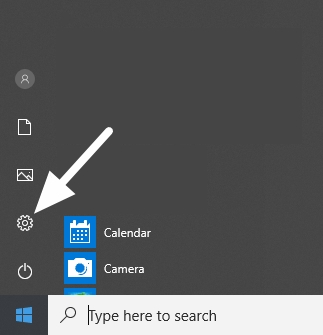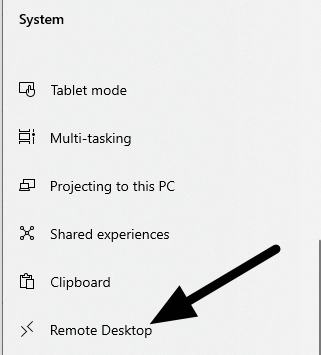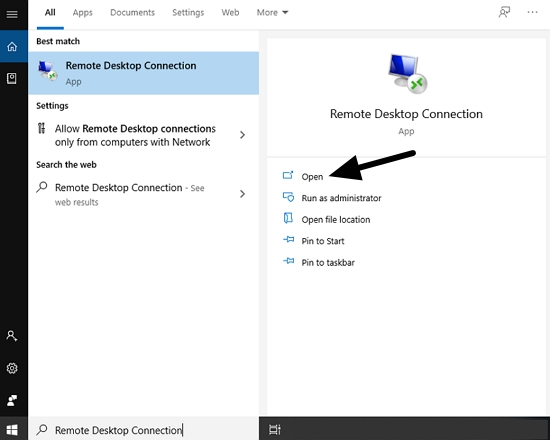Using Remote Desktop services will allow you to connect to any computer from anywhere in the world. This allows you to use applications installed on that remote computer via the internet. By remotely accessing a computer’s desktop, you can make use of a more powerful computer while traveling, or access specialist software installed on that machine.
Setting up remote access on a Windows machine is not difficult because Remote Desktop has been a native feature since Windows XP. In this guide, we will show you how to remotely access any Windows 10 desktop securely. We will also show you different methods for accessing a computer desktop remotely and explain how to stay secure while using remote access programs.
Options for remote accessing your Windows computer
If you want to remote desktop onto a Windows 10 computer via the internet, you have three options:
-
Use Windows’ built in Remote Desktop application and port forwarding on your router (not considered secure).
-
Use a third party remote desktop client.
-
Use a VPN with a dedicated IP and port forwarding.
For most people, using a third party remote desktop client will be the easiest option for accessing their Windows desktop remotely. This is because remote access software provides an easy and effective way of accessing a computer’s desktop securely.
Using a VPN to access your computer remotely will require a subscription to a service that provides port forwarding. This is a relatively rare feature, so you will need to check with your provider to be sure it has it. The VPN must also provide a dedicated static IP address (a dynamic address will change over time and will leave you unable to connect to your home’s computer).
Another option is to connect your computer directly to the internet using an open port on your router. However, using Remote Desktop (RDP) in this way is considered highly insecure because the unsecured open port could be accessed by a hacker or cybercriminal. For this reason, we will not be explaining how to use this method in this guide.
How to enable remote desktop on Windows
For security reasons, Remote Desktop (RDP) is disabled by default on all Windows computers. However, you can easily switch it on to access your computer’s desktop remotely if you want to.
The RDP client for accessing other Windows desktops is included in all editions of Windows. However, the server part is only available on Professional and Enterprise versions. As a result, anybody can initiate a remote desktop connection on Windows, but they can only ever connect to a computer running Windows Pro or Enterprise.
Bearing that limitation in mind, below we will explain how to set up a PC for incoming connections and how to connect to that desktop remotely using a Windows 10 PC. Please remember that by default, Windows Remote Desktop will only work on your local network. To access Remote Desktop over the Internet, you will need to use a VPN or port forwarding on your router.
Part 1. Set up the Host PC for incoming connections
On a computer running Windows 10 Pro or Enterprise follow these steps:
-
Click the Start button on the bottom left of your screen.
![windows start button]()
-
Hit the Settings button on the left-hand side.
![windows settings]()
-
Click on System.
![windows system]()
-
Now select Remote Desktop, and turn on Enable Remote Desktop.
![turn on remote desktop]()
-
Make a note of the name of this PC as it appears under How to connect to this PC.
You will require this name in order to connect to it later.
Part 2. Connect to your host PC remotely
Now that your computer is set up to receive incoming RDP connections, you can use any Windows PC on your local network to connect to it. To do so, just follow these simple steps:
-
In the search box in your taskbar, type Remote Desktop Connection and then open select Remote Desktop Connection.
![Windows search bar]()
-
In the Remote Desktop Connection app type the name of the PC (or the IP address of your dedicated IP if you are using a VPN) and then select Connect.
![Type in PC name or IP]()
How to connect to Windows Remote Desktop over the Internet
As previously mentioned, Remote Desktop only works on a local network by default. To access it over the internet, you will need to do one of the following things:
-
Connect the host computer to the internet directly via an open port on your router (most insecure method and not recommended).
-
Subscribe to a commercial VPN with a dedicated static IP address and port forwarding.
We recommend method 3 because this is the easiest way to access your computer remotely using Windows RDP.
Use a VPN with a dedicated IP and port forwarding
To use this method, you will first need to subscribe to a VPN that provides dedicated IPs and port forwarding for bypassing the VPN’s NAT firewall. Once you have got a subscription to a VPN that has these features, follow these steps:
-
Set up your host computer (the one running Windows Pro or Enterprise edition) using Part 1 of this guide.
Connect that PC to your dedicated IP address. We recommend VPNArea for this because it opens the port for RDP connections on its dedicated IP servers by default.
-
Use Part 2 of this guide and when asked for the ‘Computer name’ enter the IP address for the dedicated IP address you are renting from your VPN provider.
Please remember
The VPN provider must provide port forwarding on your dedicated IP, otherwise you will not be able to bypass the NAT firewall to access your remote desktop. Very few VPNs permit this, so please check before paying for a dedicated IP.
Use remote desktop software for Windows
Although using a Dedicated VPN IP address and port forwarding to connect to RDP is an option for some people, this method is not suitable for Windows Home Edition users. The solution is to use a third party remote desktop program instead.
The good news is that using third party software to connect to your computer remotely is actually considered more secure than using Windows RDP. This is because RDP was not intended for accessing a computer desktop via the internet and was not developed with security in mind. As a result, there is no real protection against brute force attacks, and hackers are known to use bots to search the net for RDP servers to exploit.
If you want to connect to your home computer’s desktop remotely we recommend the following programs:
- GoToMyPC - A superb remote desktop tool that is fantastic for both home and business users. The only drawback is that it is a touch pricey.
- Zoho Assist - An excellent remote desktop tool that has a free tier and premium plans depending on your needs.
- RemotePC - A secure cloud based remote access tool with robust AES 256 encryption.
- AnyDesk - Free for personal non-commercial use.
- TeamViewer - Free for personal non-commercial use.
- Chrome Remote Desktop - Free to use.
You can download any of these easy to use remote desktop clients by following the links above. To use them, simply install the software on both of your machines and follow the instructions provided by the services.
Once that is done, all you need to do is connect to a VPN to encrypt all your traffic and ensure that you have strong security when connecting remotely to your desktop. Please read the section below for more information on using remote desktop software securely.
Remote desktop into your PC using a VPN
If you decide to use one of our recommended third party remote desktop clients to connect to your home computer's desktop remotely, it is highly recommended that you use a VPN.
When you connect to a public WiFi hotspot, it is possible that a hacker on the public WiFi may attempt to intercept your data. This could allow them to steal your remote desktop username and password, which means that they could potentially access your remote desktop.
A VPN ensures that all of your data is encrypted securely, so that any data sent over the public WiFi network, from your remote device to your home PC, is completely secure. This stops hackers from intercepting your data and ensures that you can use a remote desktop program securely.






